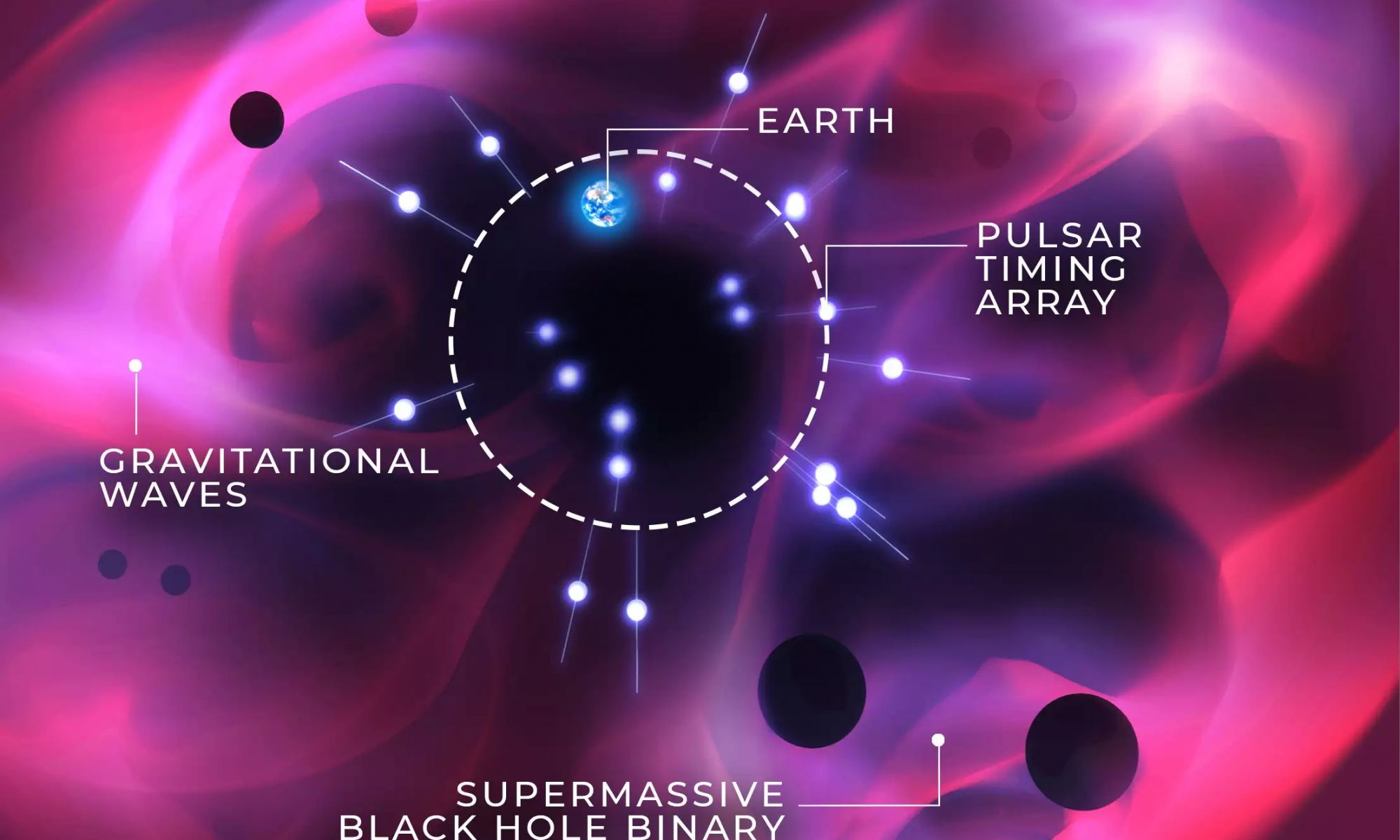Current gravitational wave observatories have two significant limitations. The first is that they can only observe powerful gravitational bursts such as the mergers of black holes and neutron stars. The second is that they can only observe these mergers for wavelengths on the order of hundreds to thousands of kilometers. This means we can only observe stellar mass mergers. Of course, there’s a lot of interesting gravitational astronomy going on at other wavelengths and noise levels, which has motivated astronomers to get clever. One of these clever ideas is to use pulsars as a telescope.
Continue reading “Pulsars Detected the Background Gravitational Hum of the Universe. Now Can They Detect Single Mergers?”Astronomers Might Have Detected the Background Gravitational Waves of the Universe

In February 2016, Gravitational Waves (GWs) were detected for the first time in history. This discovery confirmed a prediction made by Albert Einstein over a century ago and triggered a revolution in astronomy. Since then, dozens of GW events have been detected from various sources, ranging from black hole mergers, neutron star mergers, or a combination thereof. As the instruments used for GW astronomy become more sophisticated, the ability to detect more events (and learn more from them) will only increase.
For instance, an international team of astronomers recently detected a series of low-frequency gravitational waves using the International Pulsar Timing Array (IPTA). These waves, they determined, could be the early signs of a background gravitational wave signal (BGWS) caused by pairs of supermassive black holes. The existence of this background is something that astrophysicists have theorized since GWs were first detected, making this a potentially ground-breaking discovery!
Continue reading “Astronomers Might Have Detected the Background Gravitational Waves of the Universe”
